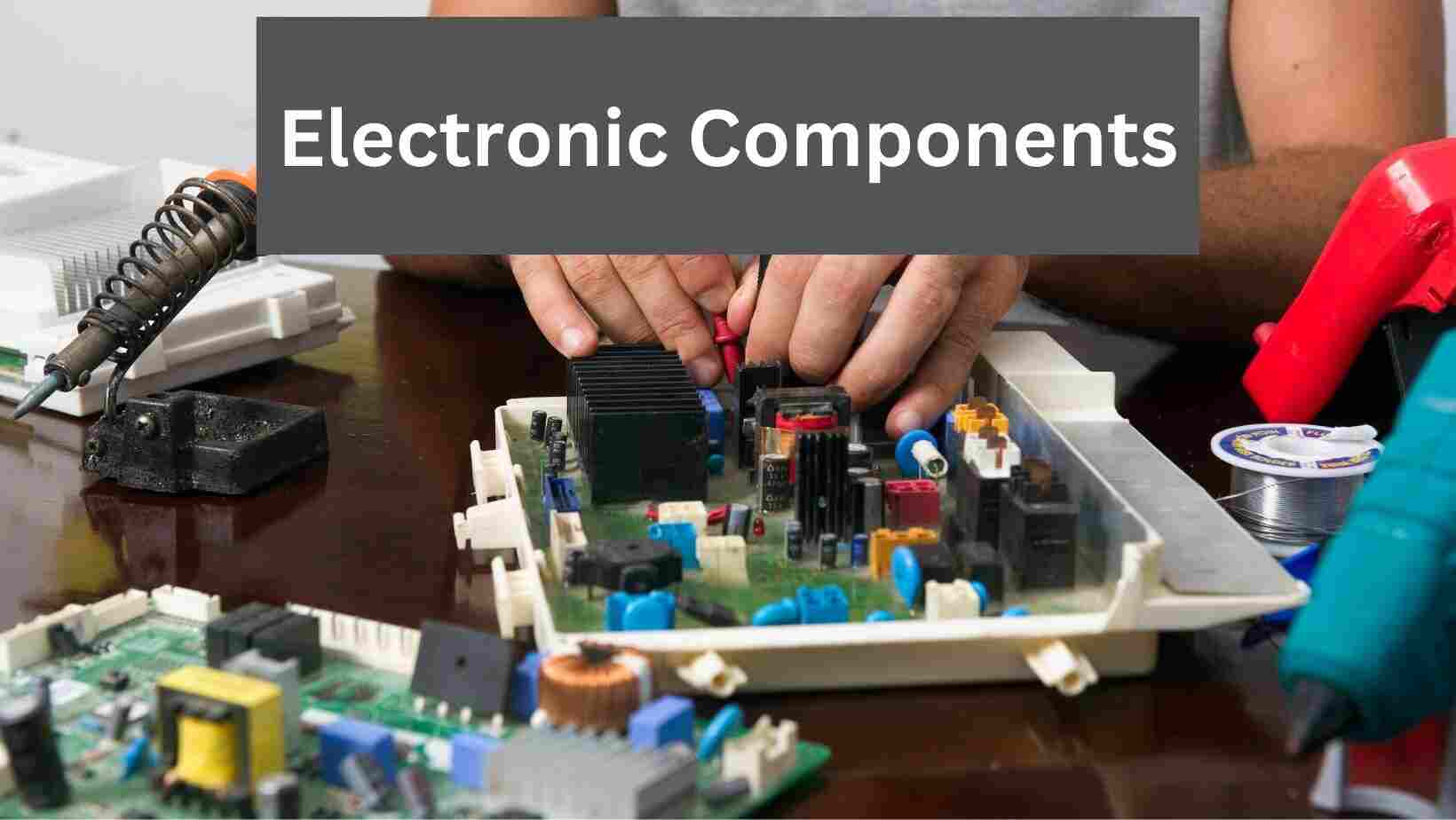Electronic Components: Building Blocks of Modern Electronics
Introduction
In our increasingly digital and interconnected world, electronic components are the unsung heroes that power the devices we rely on every day. From the small resistor that regulates current to the complex integrated circuits that serve as the brains of our gadgets, these components form the backbone of modern electronics. In this article, we’ll take a closer look at the essential electronic components, understanding not only what they are but also how they function. By the end, you’ll gain a deeper appreciation for the intricate world of electronics that surrounds us.
In the world of electronics, it’s the tiny but mighty components that make all the magic happen. From your smartphone to your computer, these electronic components play crucial roles in enabling devices to function as they do. In this article, we’re going to explore the roles and functions of some common electronic components: resistors, capacitors, diodes, transistors, and integrated circuits.

Resistors: The Path of Controlled Resistance
Resistors, represented by the symbol Ω, limit the flow of electric current. Think of them as traffic signs for electrons. They’re used to control the amount of current in a circuit, ensuring that sensitive components don’t get overloaded. In a nutshell, resistors are the regulators that maintain the right balance in a circuit.
Capacitors: Storing Electric Charge
Capacitors are like tiny, temporary batteries. They store electric charge and then release it when needed. This makes them essential for smoothing out power supplies, filtering signals, and even timing circuits. Capacitors help in maintaining stability and ensuring that your electronics function smoothly.
Diodes: The One-Way Gates
Diodes, usually shaped like a little arrow, allow electric current to flow in only one direction. They act as electronic check valves, preventing reverse current flow. This property is handy in converting alternating current (AC) to direct current (DC) and protecting sensitive components from voltage spikes.
Transistors: The Electronic Amplifiers and Switches
Transistors are like the tiny switches that control a bigger light. They can amplify signals and act as electronic switches. Transistors are at the heart of amplifiers, digital logic circuits, and many other applications. They’re the reason your smartphone can do so much with so little space.
Integrated Circuits: Miniature Circuit Boards
Integrated circuits (ICs), often referred to as microchips, are like tiny circuit boards that pack numerous electronic components onto a single, small chip. They’re the brains behind most of your electronics, containing microprocessors, memory, and various functions all in one. Integrated circuits are what make your devices smart and efficient.
In summary, these electronic components are the unsung heroes of the technology age. They work together to form the intricate circuits that power our everyday lives. Whether it’s the resistor maintaining the right balance, the capacitor smoothing out fluctuations, the diode directing traffic, the transistor amplifying signals, or the integrated circuit acting as the brain, each component plays a vital role in making our electronic devices work seamlessly. Understanding their functions opens the door to limitless possibilities in the world of electronics. So, next time you pick up your device, take a moment to appreciate the small wonders within that bring it to life.
Electronic components are the invisible heroes of our technology-driven lives. They regulate, store, direct, amplify, and process electrical signals to make our devices smart, efficient, and responsive. Understanding their roles and functions is like peeking behind the curtain to reveal the inner workings of our favorite gadgets. As we continue to push the boundaries of what technology can achieve, these tiny components will remain at the heart of innovation, enabling us to dream bigger and achieve more in the world of electronics. So, next time you use your smartphone, computer, or any electronic device, remember the remarkable roles played by these electronic building blocks that shape our digital age.
FAQs
1. What is the purpose of a resistor in an electronic circuit?
- A resistor controls the flow of electric current and helps maintain the desired balance in the circuit.
2. How do capacitors function in electronics?
- Capacitors store and release electric charge, smoothing out power supplies and filtering signals in electronic circuits.
3. What is the primary role of a diode in electronics?
- Diodes act as one-way gates for electric current, allowing it to flow in only one direction and preventing reverse current flow.
4. How do transistors work in electronic devices?
- Transistors can amplify signals and act as electronic switches, making them essential for amplifiers, logic circuits, and more.
5. What are integrated circuits (ICs) used for in electronics?
- Integrated circuits, or microchips, consolidate various electronic components on a single chip, serving as the central processing unit in electronic devices.
6. Can resistors be used to control voltage in a circuit?
- Yes, resistors can be used to create voltage dividers, allowing precise control of voltage levels in electronic circuits.
7. How does a capacitor’s capacitance value affect its function?
- The capacitance value of a capacitor determines how much charge it can store and how quickly it can release that charge when needed.
8. Are diodes used in everyday electronics, and if so, where?
- Yes, diodes are commonly used in everyday electronics, including power supplies, radio receivers, and electronic gates, to control the direction of current flow and protect components from voltage spikes.
Electronic components are the invisible heroes of our technology-driven lives. They regulate, store, direct, amplify, and process electrical signals to make our devices smart, efficient, and responsive. Understanding their roles and functions is like peeking behind the curtain to reveal the inner workings of our favorite gadgets. As we continue to push the boundaries of what technology can achieve, these tiny components will remain at the heart of innovation, enabling us to dream bigger and achieve more in the world of electronics. So, next time you use your smartphone, computer, or any electronic device, remember the remarkable roles played by these electronic building blocks that shape our digital age.
FAQs
1. What is the purpose of a resistor in an electronic circuit?
- A resistor controls the flow of electric current and helps maintain the desired balance in the circuit.
2. How do capacitors function in electronics?
- Capacitors store and release electric charge, smoothing out power supplies and filtering signals in electronic circuits.
3. What is the primary role of a diode in electronics?
- Diodes act as one-way gates for electric current, allowing it to flow in only one direction and preventing reverse current flow.
4. How do transistors work in electronic devices?
- Transistors can amplify signals and act as electronic switches, making them essential for amplifiers, logic circuits, and more.
5. What are integrated circuits (ICs) used for in electronics?
- Integrated circuits, or microchips, consolidate various electronic components on a single chip, serving as the central processing unit in electronic devices.
6. Can resistors be used to control voltage in a circuit?
- Yes, resistors can be used to create voltage dividers, allowing precise control of voltage levels in electronic circuits.
7. How does a capacitor’s capacitance value affect its function?
- The capacitance value of a capacitor determines how much charge it can store and how quickly it can release that charge when needed.
8. Are diodes used in everyday electronics, and if so, where?
- Yes, diodes are commonly used in everyday electronics, including power supplies, radio receivers, and electronic gates, to control the direction of current flow and protect components from voltage spikes.
 Electrical Engineering World Wiring a Brighter Tomorrow!
Electrical Engineering World Wiring a Brighter Tomorrow!



